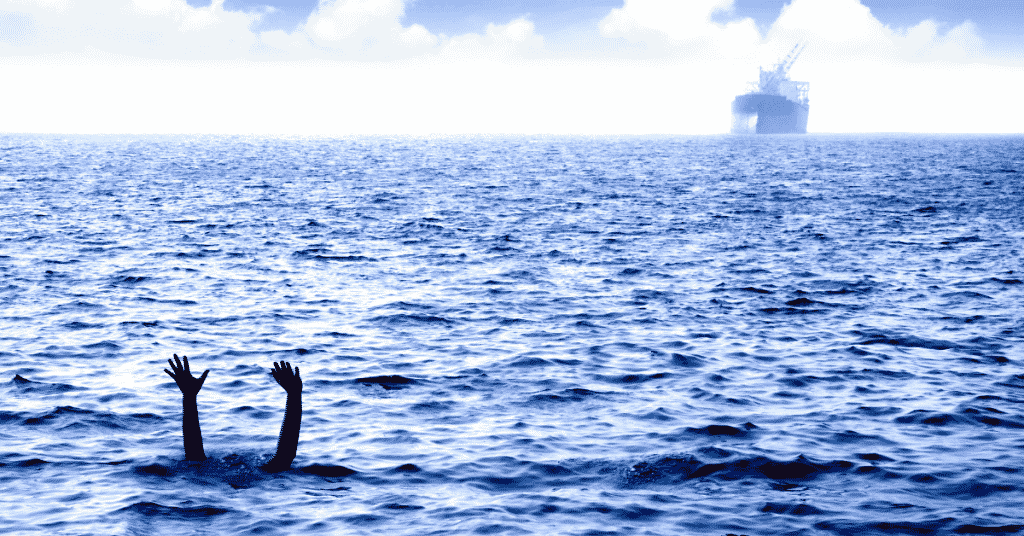Real Life Incident: Severe Injury To Deck Crew While Leaving Berth
A RoRo ferry had finished loading and was leaving the berth. A strong onshore wind was pushing the ferry against the quay, and two bow thrusters were working at 100% to push the bow off the berth. Meanwhile, forward, the seamen were preparing the lines for the next berthing.
In order to set the berthing lines with their appropriate heaving lines, the deck crew were passing the heaving line outboard from position A, where the deck crew was standing on a platform due to the high bulwark, to position C, via position B. A gaff was used to catch the line through a bulwark port at position B. The line was then passed outboard to position C. A deck crew at position C had his arm out of the bulwark port holding a gaff to catch the heaving line.

A few seconds before the line passing manoeuvre began, one of the bow thrusters came offline due to an overpower surge. There was no alarm to warn the bridge team of this situation. The ferry was quickly pushed back to the berth, and the bridge team, realising the situation too late and preoccupied with the manoeuvre, gave no warning to the deck crew, who were unaware that the ferry was closing on the berth. The ferry’s starboard side struck a berth fender at the level of the bulwark port at position C just as the deck crew had his arm outstretched and outboard. His arm was instantly severed.

The victim was treated immediately for profuse bleeding. Within minutes the vessel was re-berthed and the victim sent ashore for professional medical attention. The official investigation found that, among other things, the ferry, which was a new build still under guarantee, had suffered numerous bow thruster and electrical problems since beginning service a few months prior.
Lessons learned
- Following the accident, a task analysis made it possible to establish a work method which eliminated the risks due to the use of a gaff outboard.
- Everyday practices, when conditions are benign, can hide hazards in plain sight. Take the time to re-analyse current work methods using the ‘what if’ risk assessment methodology. Can risks be further reduced by eliminating hazards or questionable procedures?
- New vessels can be subject to a ‘breaking in’ period where numerous minor or even major anomalies are discovered. These should be corrected as soon as possible to avoid unwanted negative consequences.
Do you have info to share with us ? Suggest a correction
- Real Life Incidents: Near Miss In Open Water And Good Visibility
- Real Life Incident: Poor Situational Awareness Leads to Collision
- Real Life Incident: Monkey’s Fist Knocks on Office Window
- Real Life Incident: Paint Storage Slip-Up On Ship
- Real Life Incident: Checklist Mentality Is A Burning Problem
- Real Life Incident: Vessel Speed Exacerbates Bank Suction
Latest Case studies Articles You Would Like:
Subscribe To Our Newsletters
By subscribing, you agree to our Privacy Policy and may receive occasional deal communications; you can unsubscribe anytime.















